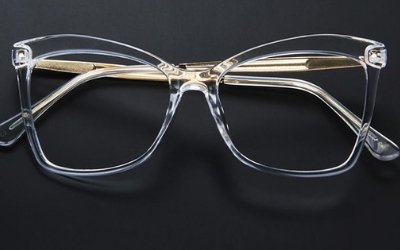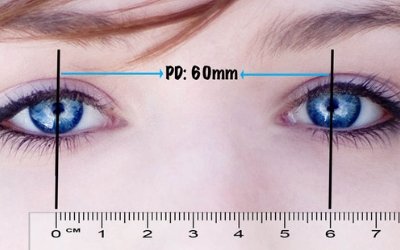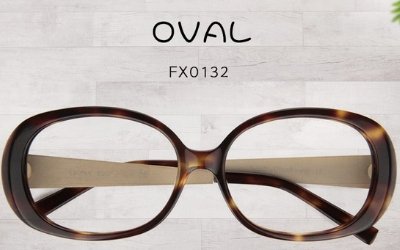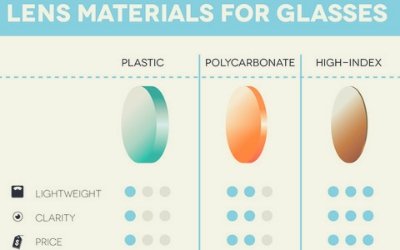Complete Guide About How To Buy Eyeglasses Online
EYE WEAR - GLASSES
Published On: January 08, 2019
If you are having hesitations buying prescription glasses online, you are not alone. It is a bit confusing because you do not want to get your prescription. Also, there are so many choices in frames and lenses. To make it easier for you, here we have a complete step-by-step guide to help you pick the perfect pair of eyeglasses.

Why buy online instead of going to the store? One word: savings! Buying online can save you a lot of money even with insurance. Prescription glasses can be quite expensive. This is why many people prefer placing orders online rather than following the old way of going to an optical store.
Here is how you buy eyeglasses online:
Step 1: Measuring Pupillary Distance (PD)
Pupillary distance is the distance between the centers of your pupils over the nose bridge. It is calculated in millimeters. PD is important for prescription glasses as it helps determine where the optical center would be in the lenses of your glasses. If this center is off, you will not be able to focus with both the eyes.
Upto 85% Off On Sale Okaidi Coupon
A significant discount of up to 85% is being offered on the current sale, allowing customers to enjoy substantial savings across a wide range of products available for purchase, with various items included in the promotional offer.
10% Off Sitewide Twiggy Shop Discount Code
A discount code for 10% off everything on the Twiggy Shop website is now available. Customers can utilize this code during checkout to enjoy savings on their purchases.
Your prescription may or may not contain PD. The good thing is you can measure it on your own. The average PD in children is 43-54 mm and in adults, it is 54-74 mm.
Here is how you can measure it yourself:
- Stand straight in front of a mirror at least 10 inches away
- Place a ruler with millimeter unit on your forehead
- Close your right eye and align the 0 mm mark with the center of the left pupil
- Keep looking straight and open your right eye, close the left one
- The mm line that aligns with the center of your right pupil is the pupillary distance of your eyes
Step 2: Choose a frame
This is the fun part where you get to choose from a variety of frames. However, there are two things you need to consider: frame shape and frame size. What is even more important is your face’s shape. Yes, some frames may complement your face’s shape while others may make it look too big or small.
Frame Shape: Frames come in rectangular, square, and round shapes.
If you have an oval face with balanced features, you can rock almost any shape. You can also wear those chunky big frames with different textures or colors. Narrow frames are not the best choice as they will make your face look narrow.
If you have a round face, you should opt for a frame that has a relatively equal width and length. Frames with angular and wider shape will complement your face and make it look longer.
For those with a square face, a rounded frame is a better fit. This is because such face shapes have stronger jawlines and wider foreheads. The round frame will sit high on the face and complement the angular facial features.
The heart-shaped faces with wider foreheads, high cheekbone, and a narrow chin, an oval and narrow frame is more complimenting. Over-sized frames will take attention away from the face and make it look smaller.
Frame Sizes
The easiest way to find your frame size is to examine your previous eyeglasses. The size is mentioned on the temple arm. It may be stamped on the bridge.
There are three numbers you need to look out for: eye size, bridge size, and temple size.
- Eye size 40-62
- Bridge size 14-24
- Temple size 120-150
Step 3: Choose the lenses
Lenses are perhaps the most critical choice when it comes to eyeglasses. They will directly affect the functionality of your glasses. There are various options and you should know which ones are best suited for you.
Lens Types
Lenses can be roughly divided into singular focal lenses and multifocal lenses. Most nearsighted or farsighted individuals need single focus lenses. Reading glasses also have singular power. Multifocal lenses have different corrective powers.
- Bifocal Lenses: These lenses combine lenses with two different powers. The above part is used for seeing things in the distance and the lower part is for things up close.
- Trifocal Lenses: To address the problem of an intermediate viewing between farther and neared objects, trifocal lenses were designed. They allow you to see clearly see the intermediate zone and feature a small lens above the part used for near sighting.
- Progressive Lenses: Progressive lenses smoothly transit from one vision to another zone. They virtually cover all the vision zones and reduce strain. They are also termed no-line lenses as they do not have a line which is found on bifocal lenses.
Lens Materials
- Plastic: Plastic lenses are the cheapest. They are recommended for those with a relatively lighter prescription.
- Polycarbonate: This is a tough lens that has impact-resistance. It is best suited for active people and perhaps kids who may break the lens while playing.
- High Index 1.67 and 1.74: High Index 1.67 is quite light and is recommended for people with the prescription of +/-9.0. High Index 1.74 is for people with an even higher prescription.
Lens Coating
Aside from the visual characteristics of the lenses, you also need to decide on a coating.
Lens coatings include anti-scratch, anti-reflection,
UV protection, and
water-repellent. These coatings protect your eyeglasses from the daily wear and tear as well as sunlight or rain. You should choose this according to your needs.
Step 4: Fill Prescription
The next step is to fill in your
prescription. Reading the prescription, especially if you are new at it, can be a bit daunting. In most cases, you will not even have to as your eye doctor will send your prescription directly for you.
Here are some abbreviations you should know about your eyeglasses prescription:
- OS: Ocular sinister (left eye)
- OP: Ocular dextrus (right eye)
How To Get Expensive Eyeglasses At Massive Discount
Prescription
eye wear is already
expensive. On top of that, if you decide to choose a high-end manufacturer or play around with frame designs, your bill will stand high. The best way to bring down the price is to use
discount codes. In the last step when you are finalizing payment, you can copy the code and apply your discount. Your expensive high-end eyeglasses will no longer be that expensive.
You can look for these coupon codes online on coupon sites. If you sign up to receive emails from the eyeglasses store, you may be able to receive exclusive discounts.
Another thing you need to look at is the store return policy. It is unlikely you will get the order wrong provided you followed the steps above. However, if your lenses are somehow off and you are not able to use the glasses, you would want to exchange or return them. Return policies vary from store to store with some offering full-refund and others partial. Some stores may only refund in store credit. Avoid stores that do not refund as that will be too risky.
Conclusion
Ordering your prescription glasses is easy and quick. You have so many options at your disposal. On top of that, you get the same glasses you would get in-store for a much lesser price. The best part is that they can maintain your information and you can order glasses easily whenever you like without needing to enter all the information again.




















